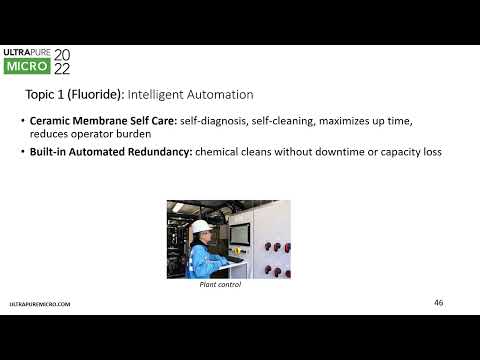Membrane protection through efficient dechlorination control with direct, accurate and automatic measurement of low-ppb chlorine residual
Date Published 2022 | Conference materials
To access our resources you will need to be a member of UltraFacility, log in to your account or purchase a membership to view this content.
Chlorine, a broadly available oxidizing disinfectant, is added to feedwater in many RO applications to a target residual concentration to prevent membrane fouling. Prolonged exposure of RO membranes to chlorine exceeding is detrimental to membrane integrity, while the absence of a disinfectant promotes biofouling and causes loss of recovery. To maintain this balance, RO membrane operators must accurately monitor residual concentration of oxidizing disinfectant in RO feedwater and manage addition of dechlorinating agents such as sodium bisulfite (SBS) or sodium metabisulfite (SMBS).
Related content

Determine functional pore sizes of ultrafiltration membranes by nanoparticle retention test using single particle ICP-MS

Doing more with less - minimizing data center water and wastewater
Use of Unique Fractional Electrodeionization in Power Plant Applications

Advanced precipitation membrane treatment systems for fluoride wastewaters and RO scaling brine
Back to results